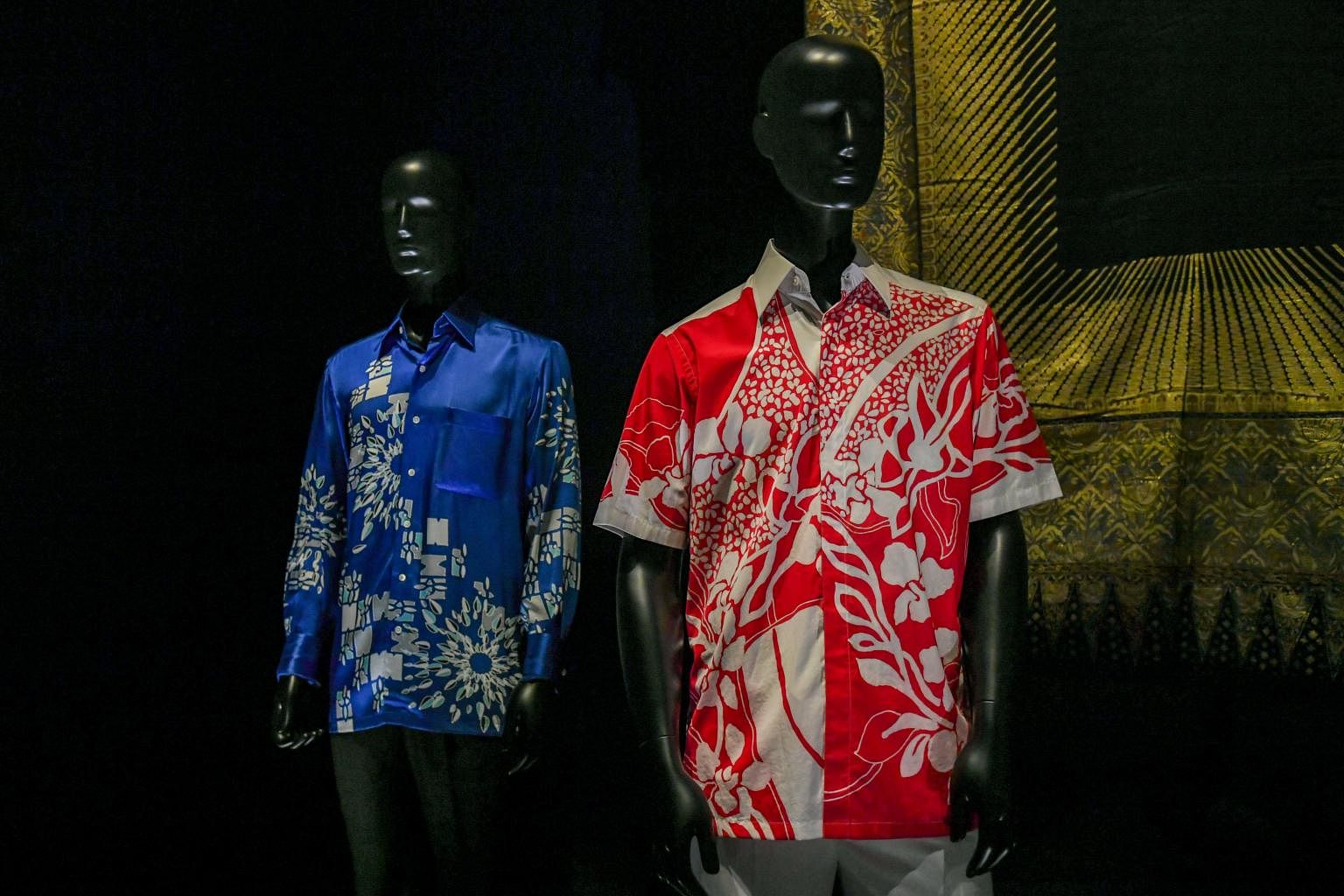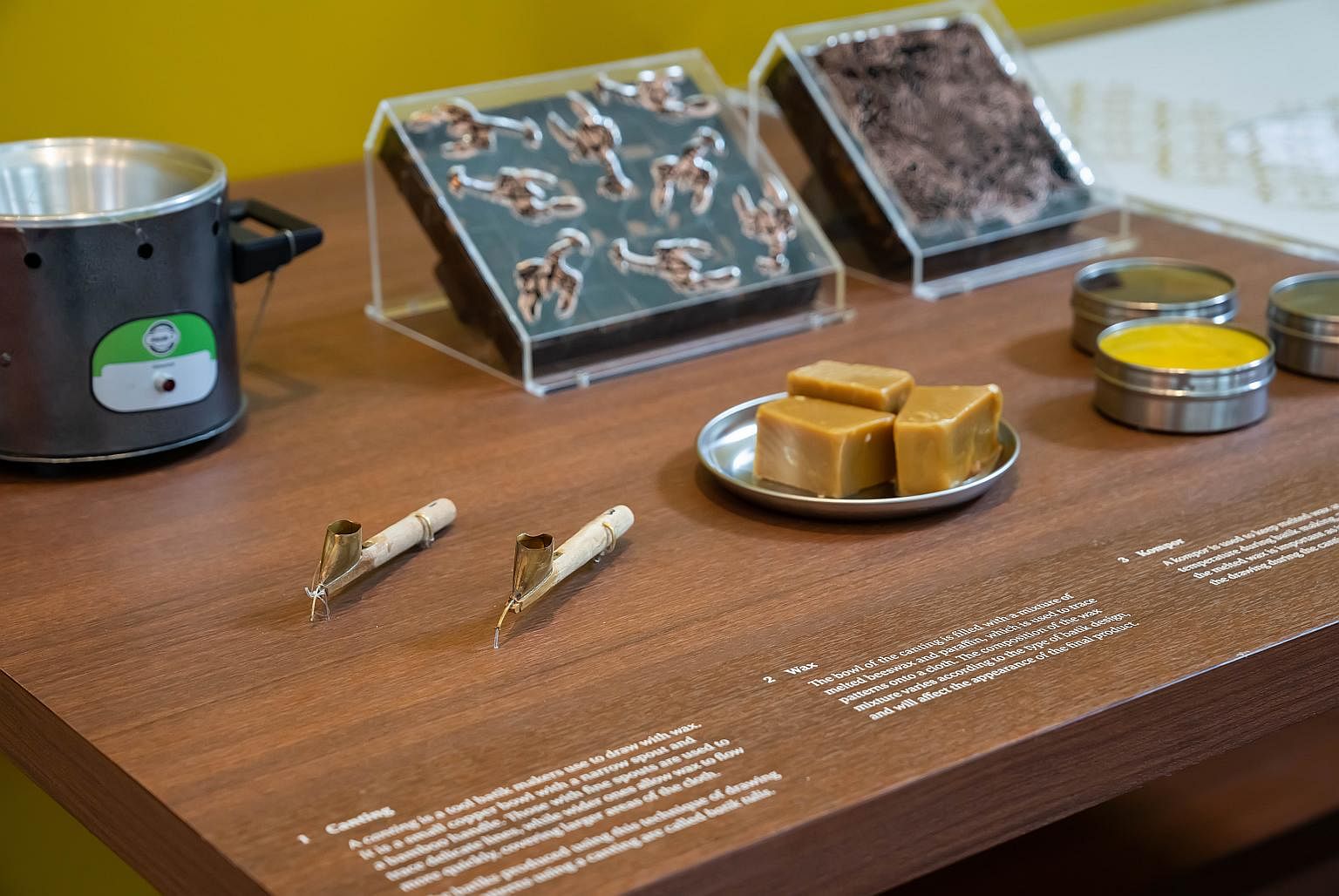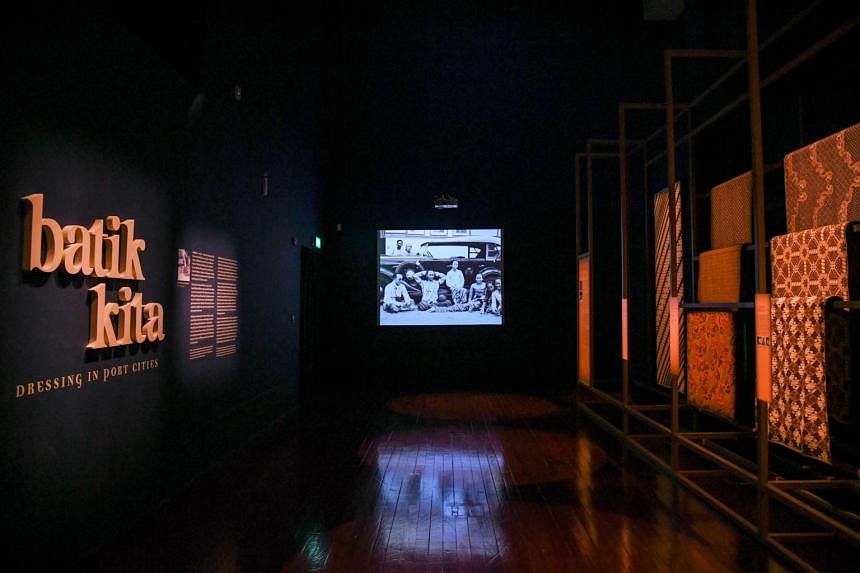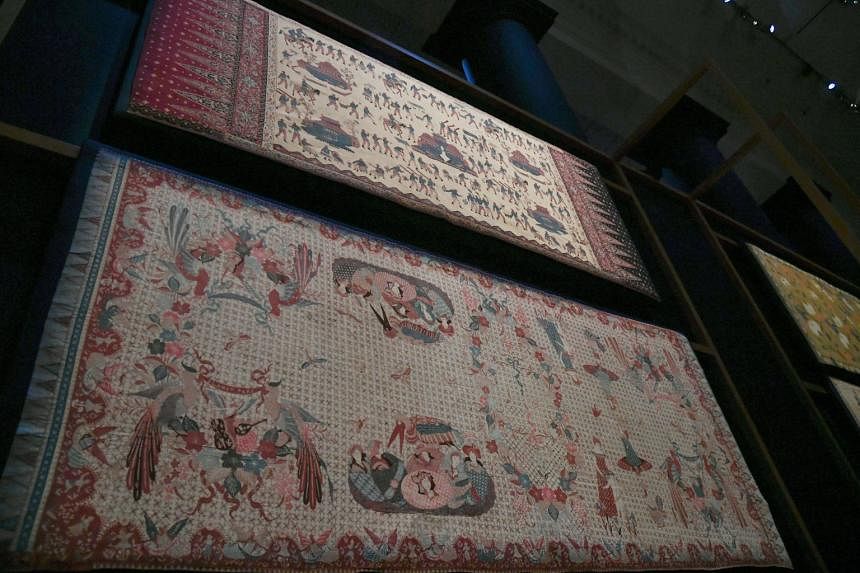SINGAPORE - Batik is traditionally linked to Java, but batik clothing today weaves together Indian, Chinese and Malay elements to create a distinctly South-east Asian cultural heritage, said local fashion designer Tan Sheau Yun.
The owner of Tong Tong Friendship Store uses Indian fabrics for her batik cloths, and noted how batik encompasses Chinese iconography and motifs as well, like the peonies and butterflies associated with the Chinese folktale The Butterfly Lovers, a heartrending story of a pair of lovers.
"I think it is very important that we preserve batik because it has elements from a lot of our ancestral civilisations, thus making it so special," she said.
Ms Tan is one of the local designers whose creations are being showcased at the Asian Civilisations Museum (ACM) from Friday (June 17) to Oct 2.
Some of the batik designs on show are replicas of the styles from the times of people's parents and grandparents, with the exhibition's curator Lee Chor Lin working with fashion-makers to reimagine and replicate them.
Called Batik Kita: Dressing in Port Cities - Batik Kita means Our Batik - the exhibition will feature more than 100 masterpieces from overseas and local lenders, as well as rarely seen batik pieces from the national collection, which conserves artefacts in the fields of paintings, textiles, objects and paper.
The exhibition showcases the rich history and culture of batik and batik-making, from its traditional roots to contemporary designs, through various cross-cultural designs and textiles.
The Long Cloth Tiga Negeri is one of eight pieces loaned by Indonesian Daniel Tendean, 48, an investment counsellor at a local bank.
The piece, which he said is the product of an assimilation of three different cultures, is a made-to-order piece from Indonesia's well-known Tjoa family workshop, run by Peranakan Chinese batik entrepreneurs over three generations.
It is decorated in a Dutch floral pattern called buketan, which originated from the word "bouquet", that contains Chinese, Javanese and Dutch elements all weaved into the cloth.
Mr Tendean said his interest in batik can be traced back to when he learnt how to play the gamelan from a neighbour during his growing-up years in Indonesia.
"I realised that I needed to learn more about my home culture. So batik was the first stepping stone for me to start my interest and passion in traditional heritage textiles, a form of cultural heritage in Indonesia," he said.
The kain panjang pagi-sore, or day-and-night long cloth in English, will also be on display - an example of how locals embraced batik as the fashion of the region in the 1930s. The pagi-sore, or day and night, is a batik layout format invented in the 1930s in Indonesia that showcases two distinctive patterns on one batik cloth.

Made in the bustling trading and fishing towns along the north coast of Java, the cloths were popular among the merchants of that time.
Batik has kept its place in contemporary fashion, as featured in the clothes designed and replicated by local designers, or shirts worn by South-east Asian leaders, including Prime Minister Lee Hsien Loong, at regional and global meetings.
Mr Kennie Ting, director of ACM and Peranakan Museum, said: "The title, Batik Kita, celebrates batik as a form of shared cultural heritage in Indonesia, Malaysia and Singapore, as well as the larger South-east Asia, with its longstanding textile traditions.
"I personally hope that the exhibition encourages more of us here in Singapore to dress in this iconic, innovative and exhilarating form of dress that is so much a part of who we are as South-east Asians."

Admission charges for the exhibition are $12 for Singaporeans and permanent residents, and $25 for tourists and foreign residents. It is open daily from 10am to 7pm, except for Fridays, which is from 10am to 9pm.
In conjunction with the exhibition, visitors can look forward to curator tours, interactive activities and workshops focusing on batik fashion, craft and design - available online and on-site. For more information, please visit the ACM's website.
Correction note: This article has been edited for clarity.



